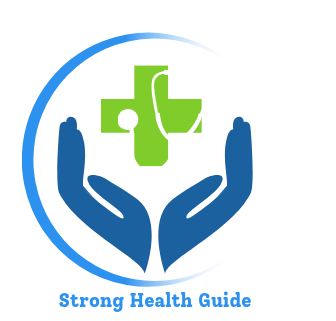Many people desire a slimmer, more defined face, but losing fat in specific areas, such as the face, can be challenging. Genetics, diet, lifestyle, and overall body composition all play a role in how fat is distributed, including in the face. While spot reduction is largely a myth, there are several strategies you can implement to help reduce facial fat and improve your overall appearance. Here are eight effective tips to help you lose face fat and achieve a more sculpted look.
1. Adopt a Healthy Diet
One of the most effective ways to lose fat from any part of the body, including the face, is to adopt a healthy diet. Focus on whole, nutrient-dense foods that are lower in calories but high in vitamins, minerals, and fiber.
- Increase Your Intake of Fruits and Vegetables: These foods are typically low in calories and high in fiber, which can help you feel full longer. Leafy greens, berries, and other colorful fruits and vegetables are particularly beneficial.
- Limit Processed Foods: Foods high in sugar, sodium, and unhealthy fats can contribute to water retention and bloating, making your face appear fuller. Opt for whole grains, lean proteins, and healthy fats instead.
- Stay Hydrated: Drinking plenty of water helps reduce water retention and can minimize bloating in the face. Aim for at least eight glasses of water a day, and consider reducing your intake of sugary and alcoholic beverages, which can dehydrate you and contribute to puffiness.
2. Practice Portion Control
Managing portion sizes can help prevent overeating, leading to overall weight loss, including in the face. Use smaller plates, bowls, and utensils to help control portions. Eating slowly and mindfully allows your body to recognize fullness signals, reducing the likelihood of overeating.
Additionally, keep track of what you eat using a food diary or mobile app. This can help you become more aware of your eating habits and make adjustments as needed.
3. Incorporate Cardiovascular Exercise
Cardio exercises are effective for burning calories and promoting weight loss, which can help reduce facial fat. Aim for at least 150 minutes of moderate-intensity cardio each week. Here are some popular options:
- Running or Jogging: A great way to burn calories while also improving your cardiovascular health.
- Cycling: Whether you ride outdoors or use a stationary bike, cycling is an excellent cardio workout.
- Swimming: This full-body workout is gentle on the joints and highly effective for burning calories.
- Brisk Walking: A low-impact option that can easily be integrated into your daily routine.
Find activities you enjoy, as this will make it easier to stick to your exercise routine.
4. Strength Training
In addition to cardio, incorporating strength training into your fitness routine can help build lean muscle mass, which boosts metabolism and promotes fat loss. Aim for at least two days of strength training each week, targeting all major muscle groups.
- Bodyweight Exercises: Push-ups, squats, and lunges can be done anywhere and require no equipment.
- Resistance Training: Using weights or resistance bands can enhance your strength workouts and promote muscle growth.
While strength training won’t directly target facial fat, losing overall body fat will naturally lead to a reduction in facial fat as well.
5. Facial Exercises
While research on the effectiveness of facial exercises is limited, some people find that they can help tone facial muscles and improve overall appearance. Here are a few exercises you can try:
- Cheek Puff Exercise: Inhale deeply and puff out your cheeks. Hold for a few seconds, then release. Repeat several times.
- Jaw Release: Simulate chewing gum by opening and closing your mouth. This can help tone the jaw and cheek areas.
- Fish Face: Suck in your cheeks and lips to make a “fish face.” Hold this position for several seconds, then relax. Repeat multiple times.
Incorporate these exercises into your daily routine for best results.
6. Get Enough Sleep
Lack of sleep can lead to increased stress levels, which may contribute to weight gain and water retention. Poor sleep is also associated with higher levels of cortisol, a hormone that can lead to fat accumulation, including in the face.
Aim for 7 to 9 hours of quality sleep each night. Establish a calming bedtime routine, avoid screens before bed, and create a comfortable sleep environment to improve sleep quality.
7. Limit Alcohol Intak
Alcohol can cause dehydration, leading to water retention and bloating, which may make your face appear fuller. Additionally, alcoholic beverages are often high in calories and can contribute to weight gain.
If you’re looking to lose face fat, consider reducing your alcohol consumption. Opt for lighter options, such as wine or spirits mixed with soda water, and always drink plenty of water to stay hydrated.
8. Manage Stress Level
Chronic stress can lead to weight gain and water retention, affecting your facial appearance. High stress levels can also result in unhealthy eating habits and poor sleep quality, compounding the problem.
To manage stress, consider incorporating relaxation techniques into your routine:
- Mindfulness and Meditation: Practicing mindfulness can help reduce stress and improve overall well-being.
- Yoga or Tai Chi: These practices promote relaxation, improve flexibility, and reduce tension.
- Deep Breathing Exercises: Simple deep breathing can help calm the mind and reduce stress levels.
Finding healthy ways to manage stress is crucial for your overall health and can help you achieve your goal of losing face fat.
Conclusion
Losing face fat requires a multifaceted approach that includes dietary changes, regular exercise, and lifestyle adjustments. While it may take time and patience, incorporating these eight effective tips can help you achieve a slimmer, more defined face. Remember, the key is to focus on overall body fat loss, as this will naturally lead to a reduction in facial fat. By adopting a healthier lifestyle, you’ll not only enhance your appearance but also improve your overall health and well-being.
